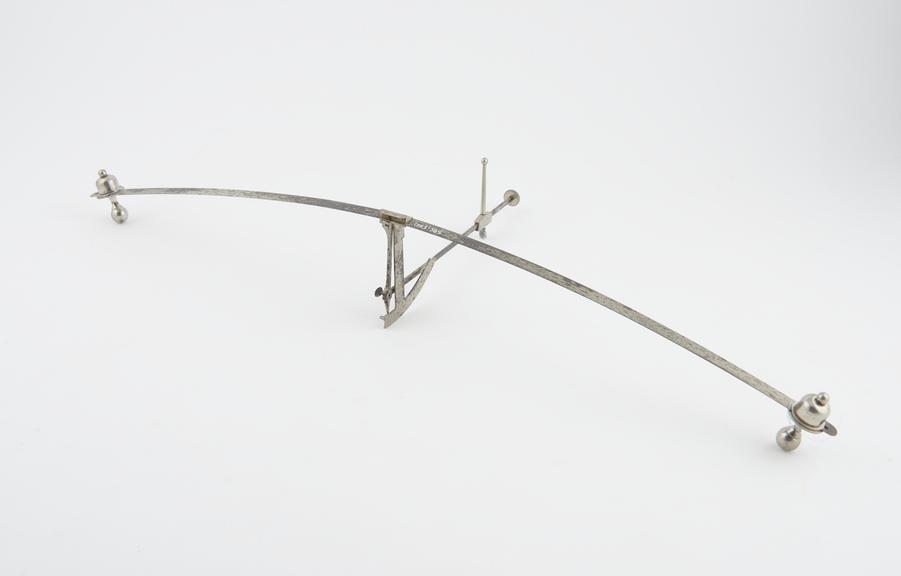

Goniometer used to measure the slope of the brow on the forehead, Paris, France, 1890-1910
- maker:
- Collin et Compagnie




Cranial goniometer for measuring Jacquart's facial angle (slope of the brow), by Collin, Paris, 1890-1910
The flexible steel spring was curved around the face, under the nose and attached to the ears. The central branch was used to measure the angle between the brow and the jaw at the centre of the face, known as the ‘Jacquart’ angle. The ‘Jacquart’ angle and other measurements of the face, such as the extension of the jaw, were used by anthropologists in the 1800s to classify human types and races in the mistaken belief that some human groups were more evolved than others.
Devised by Paul Broca (1824-80), a French surgeon and anthropologist, this instrument was made by Collin, a Parisian surgical instrument maker.
Details
- Category:
- Psychology, Psychiatry & Anthropometry
- Object Number:
- 1993-585
- type:
- goniometer
- credit:
- Tesseract




